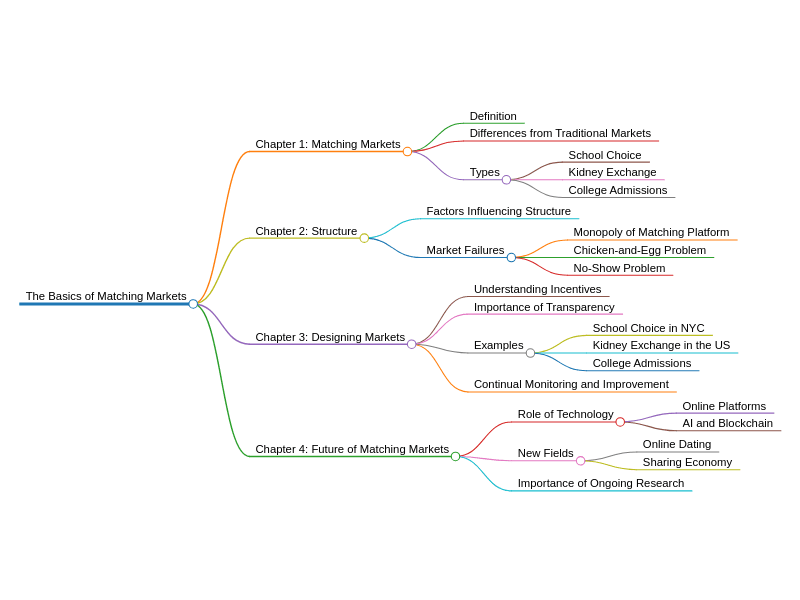“Who Gets What and Why: The New Economics of Matchmaking and Market Design” is a book written by economist and Nobel laureate, Alvin E. Roth. The book is an in-depth exploration of the various mechanisms and systems that are used to match people to goods, services, and opportunities. Roth delves into the intricacies of matching markets, which are markets where buyers and sellers are paired based on certain criteria, and examines how these markets work and what factors influence their success.
Alvin E. Roth is a renowned economist and game theorist who has made significant contributions to the field of market design. He is best known for his work on matching markets. Roth is a professor at Stanford University and has also taught at Harvard University and the University of Pittsburgh. He was awarded the Nobel Memorial Prize in Economic Sciences in 2012 for his contributions to the field of market design.
Alvin E. Roth’s book “Who Gets What and Why: The New Economics of Matchmaking and Market Design” is divided into four chapters:
Chapter 1: The Basics of Matching Markets
In the first chapter of the book, Roth introduces the concept of matching markets and explains how they differ from traditional markets. He defines matching markets as markets where buyers and sellers are paired based on certain criteria and not just on the price of the goods or services being traded. Roth explains that the success of a matching market depends on the rules and mechanisms that are used to match buyers and sellers. He also discusses the different types of matching markets, including school choice, kidney exchange, and college admissions.
- School choice: Roth explains that school choice is a matching market where parents and students are matched with schools based on certain criteria such as location, academic program, and other factors. He states that the success of a school choice system depends on the rules used to match students and schools, and the degree to which families can express their preferences.
- Kidney exchange: Roth describes kidney exchange as a matching market where patients with compatible kidneys are matched with donors. He explains that the success of a kidney exchange system depends on the rules used to match patients and donors and the number of patients and donors involved in the exchange.
- College admissions: Roth explains that college admissions are a matching market where students are matched with colleges based on certain criteria such as academic performance, extracurricular activities, and test scores. He states that the success of a college admissions system depends on the rules used to match students and colleges, and the degree to which students can express their preferences.
Chapter 2: The Structure of Matching Markets
In this chapter, Roth explores the different factors that influence the structure of matching markets. He explains that the rules and mechanisms used to match buyers and sellers can have a significant impact on the efficiency of the market. Roth also discusses the different types of market failures that can occur in matching markets.
Roth provides three examples of market failures that can occur in matching markets in this chapter: the “monopoly of the matching platform,” the “chicken-and-egg problem,” and the “no-show problem.”
- The monopoly of the matching platform: Roth explains that when a single platform or organization controls the matching process, it can lead to inefficiencies and a lack of competition. He states that this can lead to higher prices, reduced quality, and less choice for buyers and sellers.
- The chicken-and-egg problem: Roth describes this problem as a situation where buyers and sellers are unwilling to participate in a matching market because they do not believe that enough of the other side is participating. He explains that this can lead to a failure of the matching market to form.
- The no-show problem: Roth explains that when buyers or sellers do not show up for a match that has been made, it can lead to inefficiencies and a lack of trust in the matching market. He states that this can lead to a failure of the matching market to function effectively.
 Mindmap of “Who gets what and why” by Alvin Roth.
Mindmap of “Who gets what and why” by Alvin Roth.Chapter 3: Designing Matching Markets
In the third chapter, the author Alvin E. Roth delves into the design of matching markets. He explains that the success of a matching market depends on the rules and mechanisms that are used to match buyers and sellers. Roth provides examples of how matching markets have been successfully designed in different fields, such as school choice, kidney exchange, and college admissions.
Roth begins by discussing the importance of understanding the incentives of both buyers and sellers in matching markets. He notes that designing matching markets requires taking into account the preferences of both buyers and sellers and creating rules that align with those preferences. Roth also emphasizes the importance of transparency in the matching process, as it allows buyers and sellers to make informed decisions and increases trust in the market.
Roth then provides examples of how matching markets have been successfully designed in different fields. He discusses the school choice system in New York City, where parents rank their preferred schools, and the system uses an algorithm to match students to schools based on those preferences. Roth also discusses the kidney exchange program in the United States, where patients with compatible kidneys are matched with donors, and the program has been successful in increasing the number of transplants. He also provides an example of college admissions, where students are matched with colleges based on certain criteria such as academic performance, extracurricular activities, and test scores. Roth explains that the success of college admissions system depends on the rules used to match students and colleges, and the degree to which students can express their preferences.
Finally, Roth concludes the chapter by emphasizing the importance of continual monitoring and improvement in matching markets, as they are constantly evolving and new challenges may arise. He also notes that market design is an ongoing process, as new technologies, regulations, and social trends may require adjustments to the rules and mechanisms used to match buyers and sellers.
Chapter 4: The Future of Matching Markets
In the final chapter of the book, Roth explores the future of matching markets. He has a closer look at how technology has already begun to change matching markets, such as the use of online platforms for school choice and kidney exchange. He predicts that technology will continue to play a bigger role in matching markets in the future, such as the use of artificial intelligence to match buyers and sellers and the use of blockchain to increase transparency and trust in the matching process.
Roth also discusses the potential for matching markets to be used in new fields, such as online dating and the sharing economy. He notes that online dating platforms are already using matching algorithms to pair people based on their preferences and that the sharing economy is also using matching markets to connect people who need goods or services with those who have them. Roth predicts that these new fields will continue to grow in popularity and that matching markets will become an increasingly important aspect of these industries.
Roth concludes by emphasizing the importance of understanding the intricacies of matching markets in order to improve their efficiency and effectiveness. He notes that market design is an ongoing process and that new challenges will continue to arise as technology and social trends change. Roth encourages continued research and experimentation in the field of matching markets to ensure that they continue to function effectively and benefit buyers and sellers alike.
Evaluation:
Critics have generally praised “Who Gets What and Why” for its clear and concise explanations of complex concepts. The book has been described as a “must-read” for anyone interested in market design and the intricacies of matching markets. Critics have also noted the book’s relevance to current issues, such as the ongoing debate over school choice and the rise of the sharing economy.
Critics have praised the book for its ability to explain complex concepts in a clear and easy-to-understand manner. They have also commended Roth for providing real-world examples and case studies to illustrate his points. Many have noted that the book is a valuable resource for both academics and practitioners in the field of market design.
Critics have also noted the book’s relevance to current issues, such as the ongoing debate over school choice and the rise of the sharing economy. They have praised Roth for providing insights into how matching markets can be used to address these issues and for highlighting the potential benefits and drawbacks of different market designs.
However, some critics have criticized the book for its lack of focus on the broader social and economic implications of matching markets. They have also noted that the book primarily focuses on matching markets in the United States and does not provide a comprehensive global perspective.
Overall, “Who Gets What and Why” has been well-received among critics, who have praised the book for its clear and concise explanations of complex concepts, its relevance to current issues, and its ability to provide real-world examples and case studies. However, some have criticized the book for its lack of focus on broader social and economic implications and its primarily focusing on matching markets in the United States.
It is also worth looking at other publications by Alvin E. Roth about markets and market design. “The Handbook of Market Design” is a collection of essays written by leading experts in the field of market design. The book covers a wide range of topics, including the design of auction markets, matching markets, and school choice systems. “The Redesign of Centralized Matching Markets” is a paper in which Roth discusses how to redesign centralized matching markets to improve their efficiency and effectiveness. The paper provides a detailed analysis of the design of the New York City school choice system and the U.S. kidney exchange program. And last but not least: “The Economics of Market Design” is a book which provides an overview of the field of market design and the various mechanisms and systems that are used to match buyers and sellers. The book covers a wide range of topics, including auction markets, matching markets, and school choice systems.










